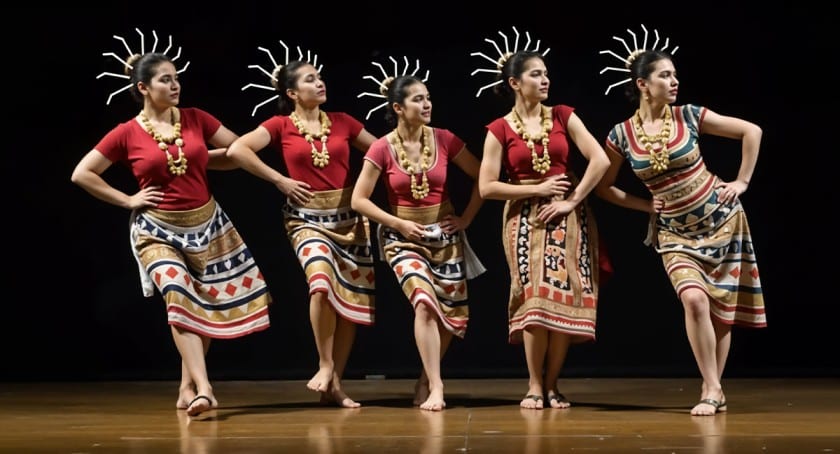Tribal Festivals of Odisha
Odisha, known for its breathtaking landscapes, ancient temples, and rich cultural heritage, is also home to a diverse tribal population. With over 62 communities, Odisha boasts a unique blend of customs, traditions, and celebrations that showcase the essence of its indigenous groups. Among the many cultural treasures of the state, its tribal festivals stand out as vibrant expressions of life, spirituality, and togetherness. These festivals offer an enchanting experience, allowing visitors to witness age-old rituals, rhythmic dance forms, and mesmerizing music in their most authentic form.
Chaita Parab – A Springtime Feast
One of the most significant festivals among Odisha’s tribal communities, Chaita Parab, is widely celebrated by the Gond, Bonda, and Koya groups. This celebration, which takes place in March and April, signifies the entrance of spring and is a time for a lot of fun. The festival features traditional music, energetic dances, and feasts where people gather to express gratitude to nature for a bountiful harvest.
Highlights:
- Rituals dedicated to deities and ancestors
- Spectacular traditional dances such as Dhemsa
- Community feasts and cultural performances
Karam Festival – Honoring Mother Nature
The Ho, Oraon, and Kisan communities predominantly celebrate the Karam Festival and dedicate it to Karam Devta, the deity of youth, prosperity, and agriculture. During this monsoon-season festival in August or September, people plant a sacred Karam tree and perform rituals to invoke blessings for a plentiful harvest and overall well-being.
Highlights:
- The planting of the Karam tree and religious rituals
- Tribal songs and storytelling sessions
- Dance performances that reflect agricultural themes
Maghe Parab – A Festival of New Beginnings
The Maghe Parab, observed in January by the Munda and Ho communities, signifies the arrival of a new agricultural season. It is a joyous occasion when people worship their ancestors, consume freshly harvested crops, and engage in community gatherings.
Highlights:
- Offerings to ancestors and deities
- Preparation of traditional delicacies like rice beer and millet-based dishes
- Social gatherings and tribal dances
Bija Pandu – A Seed-Sowing Celebration
The Dongria Kondh and Kutia Kondh communities celebrate Bija Pandu to mark the beginning of the sowing season. The festival thanks the earth and deities for a prosperous agricultural cycle. Its unique feature is the performance of sacred rituals involving worshipping seeds before planting them in the fields.
Highlights:
- Traditional rituals to bless the seeds
- Indigenous music played using traditional instruments
- Feasting on organic, homegrown produce
Bali Yatra of the Bonda Community – Celebrating Trade and Travel.
The Bonda community, known as one of Odisha’s earliest groups, celebrates Bali Yatra as a tribute to their ancestors’ trading heritage. Unlike the grand Bali Yatra in Cuttack, the tribal version is more localized and symbolizes the spirit of adventure and barter trade among indigenous groups.
Highlights:
- Rituals honoring the ancestors’ seafaring traditions
- Storytelling sessions about the community’s trading history.
- Exchange of goods and cultural showcases
Sohrai Festival – The Festival of Cattle Worship
The Santhal and Munda communities celebrate the Sohrai Festival during Diwali, dedicating it to cattle, which they consider essential for agriculture. The festival includes decorating cattle with natural paints, feeding them special meals, and conducting religious ceremonies to seek their well-being.
Highlights:
- Ritual bathing and decoration of cattle
- Sacred prayers and livestock processions
- Community feasts and folk dance performances
Ghumura Dance Festival – A Spectacular Musical Affair
Ghumura is a traditional dance form of the Kalahandi region, celebrated during various tribal festivals. It features vibrant costumes, rhythmic beats of the Ghumura drum, and synchronized movements that depict war stories and mythological tales.
Highlights:
- Energetic performances with traditional drums and instruments
- Display of warrior-like dance postures
- A blend of music, storytelling, and spirituality
Why You Should Experience Odisha’s Tribal Festivals
Odisha’s tribal festivals are not just about celebrations; they offer deep insights into indigenous life. Here’s why you should add them to your travel bucket list:
- Authentic Cultural Experience: Witness tribal customs and traditions firsthand, providing a deep understanding of Odisha’s indigenous culture.
- Mesmerizing Dance and Music: Enjoy folk performances rich in rhythm and history. Through movement and sound, these performances bring stories of the past to life.
- Unique Handicrafts and Cuisine: Discover indigenous arts and savor traditional delicacies, including millet-based dishes, rice beer, and other tribal specialties.
- Warm Hospitality: The kindness and friendliness of the tribal communities in Odisha, who extend a warm welcome to guests.
- Connection with Nature: They promote sustainable living through deep-rooted ecological traditions, linking every ritual and celebration to nature and agriculture.
Conclusion
Odisha’s tribal festivals are a magnificent showcase of India’s rich and diverse cultural heritage. Each festival tells a unique story of resilience, joy, and reverence for nature. Whether you are a culture enthusiast, an avid traveler, or someone seeking an offbeat experience, these festivals provide a rare opportunity to put yourself in the untouched beauty of tribal traditions. Odisha’s rich tribal heritage shines through the rhythmic beats of the Ghumura dance, the vibrant festivities of Chaita Parab, and the profoundly spiritual Sohrai Festival, offering a treasure trove.
Thus, schedule your trip and set out on a once-in-a-lifetime adventure into the tribal communities of Odisha. Experience their way of life, witness the enchantment of their festivals, and bring back memories of a long-standing civilization that still flourishes in balance with the environment.


